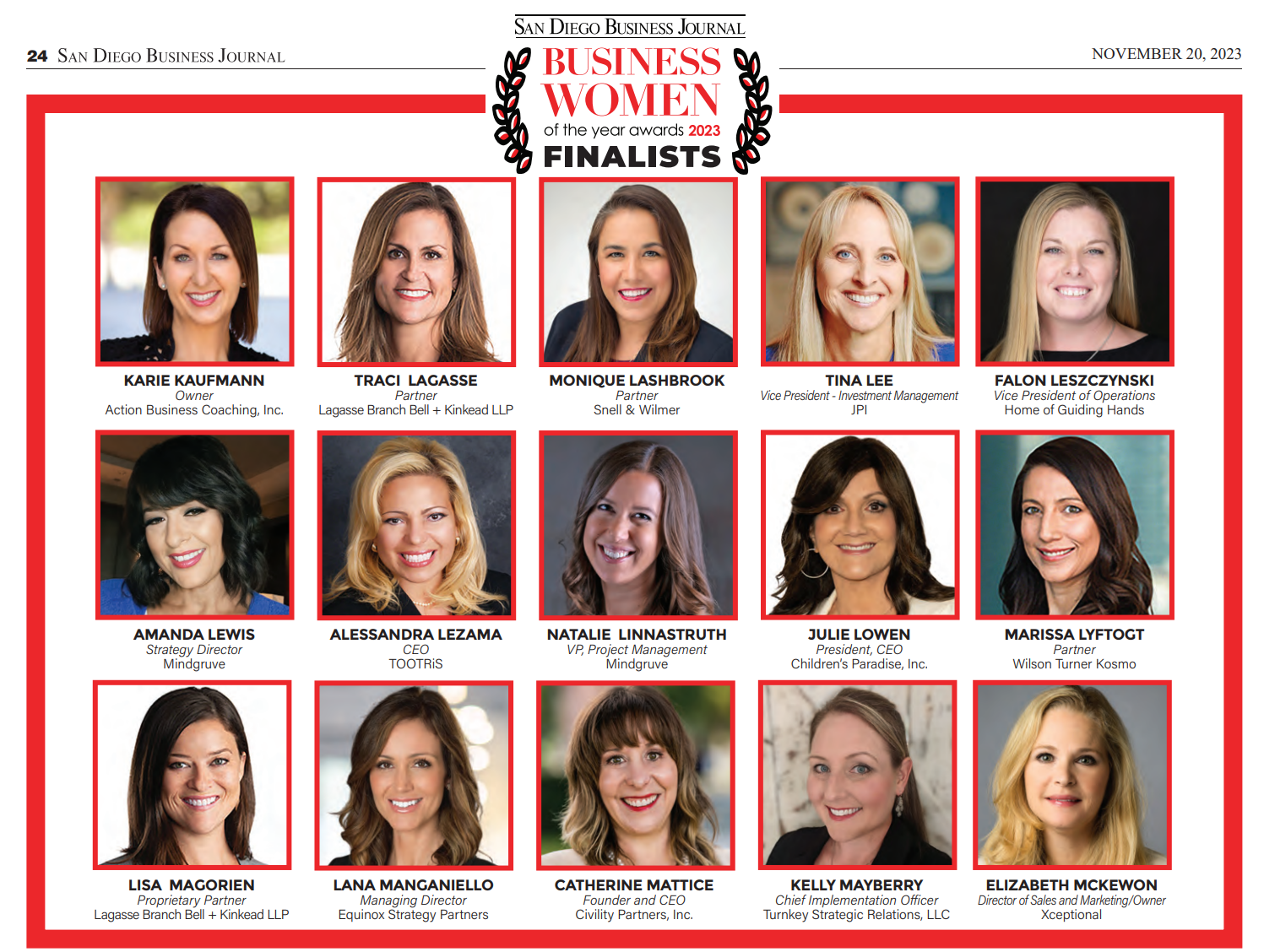EQUINOX STRATEGY PARTNERS
To Join or Not to Join: Professional Organization Involvement for Lawyer Career Advancement
Presented by: American Bar Association


Some practitioners seek to give back to the community that has created an environment for them to succeed in practicing law, while others hope the exposure will lead to new business opportunities. Still others are flattered that an organization is interested in their brainpower.
Whatever your objective (and this is definitely something you need to identify before joining any organization), I discuss below factors to take into consideration when choosing an organization to join and ways you can maximize your time and engagement.
Why get involved?
- Expand your network: New connections with professionals who can hire or refer you for the type of matters you seek is key to growing your practice. Participating in an organization should provide you with many opportunities to connect with professionals on a local, regional, national, and sometimes global level. Participating in special interest groups, sections, or discussion boards sponsored by an organization is another way to connect with people who are likeminded and/or working in the same niche you are.
Best practice: Merely attending the quarterly board meetings will not maximize your intended exposure. Individually invite fellow members to coffee, lunch, or drinks as a way to get to know them better outside of the group environment. - Boost your credibility and visibility: Being actively involved in your professional community can boost your credibility among your peers, your clients, and your prospects. Associations generally look to their members to share their unique expertise and their connections through their participation in the organization. Raise your hand for a leadership role to not only develop your skills as a leader but also to boost increase your visibility. Relating to other professionals who share common interests is a great way to strengthen your reputation.
Best practice: Align your talents, personal interests, and passions with an organization’s mission and available roles and volunteer opportunities. Your service will be more fulfilling and feel less like a “chore.” - Professional development: Joining a professional organization that directly aligns with your practice (like your practice area section at a bar association) is a great way to further your legal acumen. Organizations often offer articles, webinars, reports, white papers, courses, workshops, seminars, conferences, and certifications to keep their members current on the latest industry research, innovations, and trends.
Best practice: Involvement in trade organizations within your client industry focus is a great way to get an in-depth and more complete understanding of your ideal client and their circumstances, and along with opening up professional opportunities, it allows you to better serve them. - Mentorship opportunities: Finding professionals—junior and senior—who can support your growth is a huge benefit in joining a professional association. There are also meaningful rewards in mentoring others, including honing your leadership abilities, learning new perspectives and insights, and feeling a sense of contribution.
Best practice: Just as senior professionals have extended a hand to provide you with guidance throughout your career, make sure to identify ways you can leverage your talent in assisting others to grow. - Build a support system: Making connections outside of your firm who understand your circumstances and can offer guidance and insight is one of the most important reasons to join a professional organization. Strong bonds within professional organizations will improve your career opportunities, will help you garner more influence, and most importantly, will make work and life more fun.
Best practice: Don’t wait until you are in need to build your support system. Make the investment into developing authentic relationships early to build a network of advocates who want to see you succeed and are happy to help as needs arise.
How to pick the right organization to join?
As is the case with any activity that takes time away from your practice, your family, or your hobbies, deciding on the right organizations to spend your time with is critical to your success and happiness.
- Get clear on your intent: What is most important to you right now? Bar associations can be effective for professionals who are interested in building their reputations and connections among professionals with a similar practice emphasis, as well as staying on the cutting edge of their specialties. On the other hand, trade organizations can provide a more direct opportunity to connect with the prospective client.
Best practice: Ensure the organization aligns with your intended purpose. Write down your short-, mid-, and long-term professional goals, and then match associations with your objectives. - Do your research: Spend time reviewing the online biographies of professionals in your practice area whom you admire to learn of their outside-of-the-office involvements. Find out what organizations your ideal clients and prospects are involved in. Exploring organizations and gathering information could be a great reason to reach out to these individuals directly, initiating or bolstering relationships, so that you can ask what their experience has been like and where they see the organization heading.
Best practice: Explore the websites of organizations you are interested in to learn if their missions are congruent with your objectives. Does the organization have multiple ways to interact—various sections, committees, special interest groups, leadership opportunities, recognitions, newsletters, publications, webinars, meetings, conferences? Reach out to volunteer leadership at the organizations you are interested in to find out more.
How to get the most out of your involvement?
Once you have identified an organization of interest, be sure to maximize your gain by being proactively involved. Your return on investment (your time and dues paid) will likely be directly tied to your activity level within the organization.
- Develop relationships: Meaningful relationships take time, intention, and proactive effort. Get involved by joining a committee, volunteering for a project, planning an event… you want to get to know members on an individual basis. The better you know the other professionals in an organization, the more effective you can be as a member, and the more value you can add. Remember that the way you show up for committee or board work is the way people will assume you show up to everything.
Best practice: Personally reach out to the individuals leading committees and those on the executive committee to set up one on one time to learn more about what they are looking to accomplish and to strategize on how you can best be of service. Then make sure you are checking in with them every few months, keeping the momentum moving forward on both your contribution to the organization and your personal relationship. - Keep your directory profile updated with your current biography and contact information. Make it clear what you do for whom.
Best practice: Consider adding specific representative matters into your biography to give your peers and prospective clients an idea of the challenges you have solved for clients. Set a recurring calendar reminder every six months to review and update your online profiles. (This is also a best practice for your website, LinkedIn, third-party review sites like SuperLawyers and AVVO, and anywhere else a profile of yours may pop up through a Google search.) - Share your expertise and insights: Volunteer to write for the organization’s publication, speak at an event, provide webinar presentations, or offer to assemble a panel. Organizations look to the membership to provide the organization with learning content so raise your hand and highlight your hard won expertise. It benefits the organization and your peers and it raises your credibility and visibility as the go-to authority in your specialty.
Best practice: Remember to make sure the topics you present on are directly associated with the ideal types of matters you seek. Thought leadership topics outside of your focus will only confuse your target audience, and you will not be memorable.
How to assess whether to stay or go?
It takes some forethought to methodically decide whether your involvement is panning out or not.
- Tracking: You can improve on what you measure. On a monthly basis, record the amount of time you are spending serving within the organization. Keep track of inbound and outbound member referrals and opportunities for visibility.
Best practice: Calendar time to review and capture your business development activity at the same time every week or month. Make a goal to take advantage of a specific number of thought leadership opportunities per year, and track what your activity looks like on that front every month. - Effort: You will reap what you sow. When joining any organization, determine at the outset how much time you want to spend deciding whether or not the organization is serving your needs. Before you give up, determine if you have given it your all. Is there anything else you could be doing to get more out of your involvement?
Best practice: Without a strategy and some conscientious planning, it is easy to find yourself a passive member of an organization. Come up with a goal of how many one-on-one meetings you want to have throughout the year with people involved, and then plan exactly how and when you will do outreach to coordinate them. - Business development: For your involvement in any organization or association to lead to new business, the following three elements must be present: clarity in your messaging (in your work, what specific value do you provide and to whom?), direct effort in building relationships (do you only attend general meetings, or have you been proactive around individual interactions?) and visibility among the members (does the membership know your name?). If you have accomplished these three elements and opportunities have yet to result, it is likely time to pull the plug and find a new group.
Best practice: It usually takes at least eighteen months of active involvement in any organization before you start to see measurable results. Determine on the onset what you are going to do to educate the membership on your expertise. This should include some kind of visibility opportunity related to your expertise and/or one-on-one discussions. After a year and a half of consistent conversations and/or strategic thought leadership, you still are not uncovering any opportunities, it may be time to reevaluate your participation.
Involvement in professional organizations provides value and opportunity for lawyers at every stage of practice if it is done with purpose and intention. As the world transitions more and more towards virtual and hybrid environments, finding opportunities to authentically connect with people requires a bit more effort than it may have in the past. But these human connections are what makes work and life fulfilling and enjoyable, so this focused intention and energy is well worth it.




















